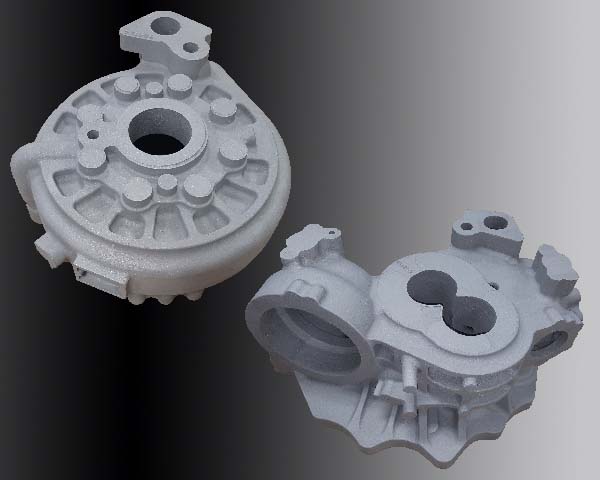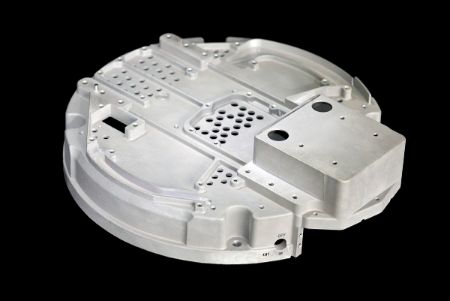Why Precision aluminum casting is Shaping the Future of Lightweight Components
Wiki Article
Understanding Aluminum Casting: A Comprehensive Guide to Its Applications and advantages
Aluminum casting is a procedure that changes molten aluminum right into strong kinds via numerous methods. This approach provides significant advantages, such as light-weight toughness and rust resistance. It locates applications in countless markets, mirroring its flexibility. Nevertheless, recognizing the intricacies of aluminum casting and its finest methods can substantially influence the quality of the final product. Exploring these elements reveals real potential of aluminum casting in modern-day production.The Essentials of Aluminum Casting
Aluminum casting is a production procedure that changes molten aluminum into solid objects through various techniques. This procedure starts with home heating aluminum up until it reaches its melting factor, enabling it to flow into molds. There are several approaches of aluminum casting, consisting of sand casting, pass away casting, and investment casting, each appropriate for various applications based upon layout complexity and production quantity.In sand casting, molds are formed utilizing sand, providing adaptability for elaborate forms. Die casting includes compeling liquified aluminum into a steel mold under high stress, resulting in exact and repeatable parts. Investment casting, on the various other hand, utilizes a wax pattern that is coated with ceramic to create detailed components.
After the aluminum strengthens and cools, the molds are eliminated, disclosing the finished items. This casting procedure is indispensable in numerous markets, consisting of automotive, aerospace, and durable goods, allowing the development of lightweight and sturdy parts.
Advantages of Aluminum Casting
Among the essential benefits of aluminum casting hinges on its capacity to create light-weight yet strong elements. This unique combination makes aluminum an ideal option for numerous markets, including vehicle, aerospace, and consumer items. The inherent corrosion resistance of aluminum additionally boosts the resilience of the cast parts, prolonging their life expectancy and reducing the demand for upkeep.
Additionally, aluminum casting enables intricate geometries and detailed designs, which can bring about more efficient and cosmetically pleasing products. The material's excellent thermal and electrical conductivity even more expands its applications, specifically in electronics and warm exchangers.
Aluminum recycling is highly reliable, adding to environmental sustainability and lowering manufacturing prices. In general, the benefits of aluminum casting placement it as a sensible and functional service for producers looking for to maximize efficiency while lessening weight and source usage.
Typical Methods of Aluminum Casting
While different techniques exist for aluminum casting, each method uses distinct advantages tailored to particular applications. One of the most usual approaches consist of sand casting, pass away casting, and investment casting.Sand casting, known for its adaptability, uses sand molds to produce complicated forms and appropriates for both small and big manufacturing runs. Pass away casting, on the various other hand, uses high-pressure injection of molten aluminum into steel molds, resulting in accurate measurements and smooth surface areas, making it excellent for automation.
Investment casting, often referred to as lost-wax casting, entails creating a wax pattern coated with a ceramic shell. Aluminum Foundry. As soon as the wax is dissolved, molten aluminum is put into the dental caries, yielding complex styles and superb surface area finishes
Each of these methods plays a vital function in the aluminum casting landscape, supplying details benefits that provide to varying manufacturing demands and manufacturing ranges.
Applications Throughout Industries
The convenience of aluminum casting techniques permits a variety of applications across different sectors. In the vehicle field, lightweight aluminum parts boost fuel effectiveness and efficiency, adding to the growing need for electrical cars. Aerospace markets make use of aluminum castings for their strength-to-weight ratio, making certain safety and security and toughness in aircraft manufacturing.The construction industry gain from aluminum casting via building aspects and architectural components that stand up to deterioration and need marginal maintenance. Furthermore, customer electronics suppliers utilize aluminum castings for housings and structures, balancing aesthetic appeals with functionality.
In the aquatic sector, aluminum spreadings are preferred for watercrafts and aquatic Aluminum Foundry devices because of their resistance to saltwater deterioration. The clinical area uses aluminum castings in surgical tools and tools, making sure accuracy and dependability. On the whole, aluminum casting's flexibility allows it to fulfill the diverse needs of multiple sectors, making it a necessary production procedure.
Ideal Practices for Effective Aluminum Casting
Effective aluminum casting relies upon a combination of cautious preparation, exact execution, and complete quality assurance. At first, picking top quality aluminum alloys is crucial, as they directly affect the casting's properties and efficiency. Correct mold and mildew layout is vital, guaranteeing that it suits thermal tightening and minimizes issues.Throughout the melting process, preserving the proper temperature and staying clear of contamination are essential to achieving an uniform alloy. Additionally, utilizing efficient putting methods can improve the dental filling of molds, minimizing the chance of air pockets or incorporations.
Post-casting, implementing comprehensive evaluation methods, such as visual assessments and non-destructive testing, guarantees that defects are recognized early. Moreover, using strenuous top quality control procedures throughout the procedure helps maintain uniformity and integrity in the last items. By sticking to these finest practices, suppliers can significantly improve the success and performance of their aluminum casting procedures.
Frequently Asked Questions
What Safety and security Steps Should Be Taken Throughout Aluminum Casting?

How Can Flaws in Aluminum Castings Be Decreased?
Defects in aluminum castings can be minimized with cautious mold design, proper temperature level control, ensuring clean steel, making use of ideal pouring techniques, and performing complete assessments to recognize and attend to concerns prior to finalizing the casting process.
What Is the Environmental Influence of Aluminum Casting?
The environmental influence of aluminum casting includes energy-intensive procedures, greenhouse gas emissions, and source extraction worries. Advancements in reusing and lasting practices can alleviate these effects, advertising a much more green approach to aluminum production.Can Aluminum Casting Be Recycled?
Yes, aluminum casting can be recycled effectively. The reusing process requires significantly much less power compared to primary aluminum manufacturing, making it an eco-friendly option that adds to source preservation and lowered carbon emissions.What Are the Expenses Connected With Aluminum Casting Processes?
Prices connected with aluminum casting processes include material costs, labor, devices upkeep, power intake, and mold and mildew manufacture. These factors can vary considerably based on production scale, complexity of styles, and certain production methods used.Aluminum casting is a procedure that changes liquified aluminum right into solid forms through various methods. Aluminum casting is a production procedure that changes liquified aluminum into solid items with numerous strategies. While numerous strategies exist for aluminum casting, each technique uses unique advantages tailored to specific applications. The ecological influence of aluminum casting consists of energy-intensive processes, greenhouse gas emissions, and source removal worries. Expenses associated with aluminum casting procedures consist of material expenses, labor, tools upkeep, energy intake, and mold and mildew construction.
Report this wiki page